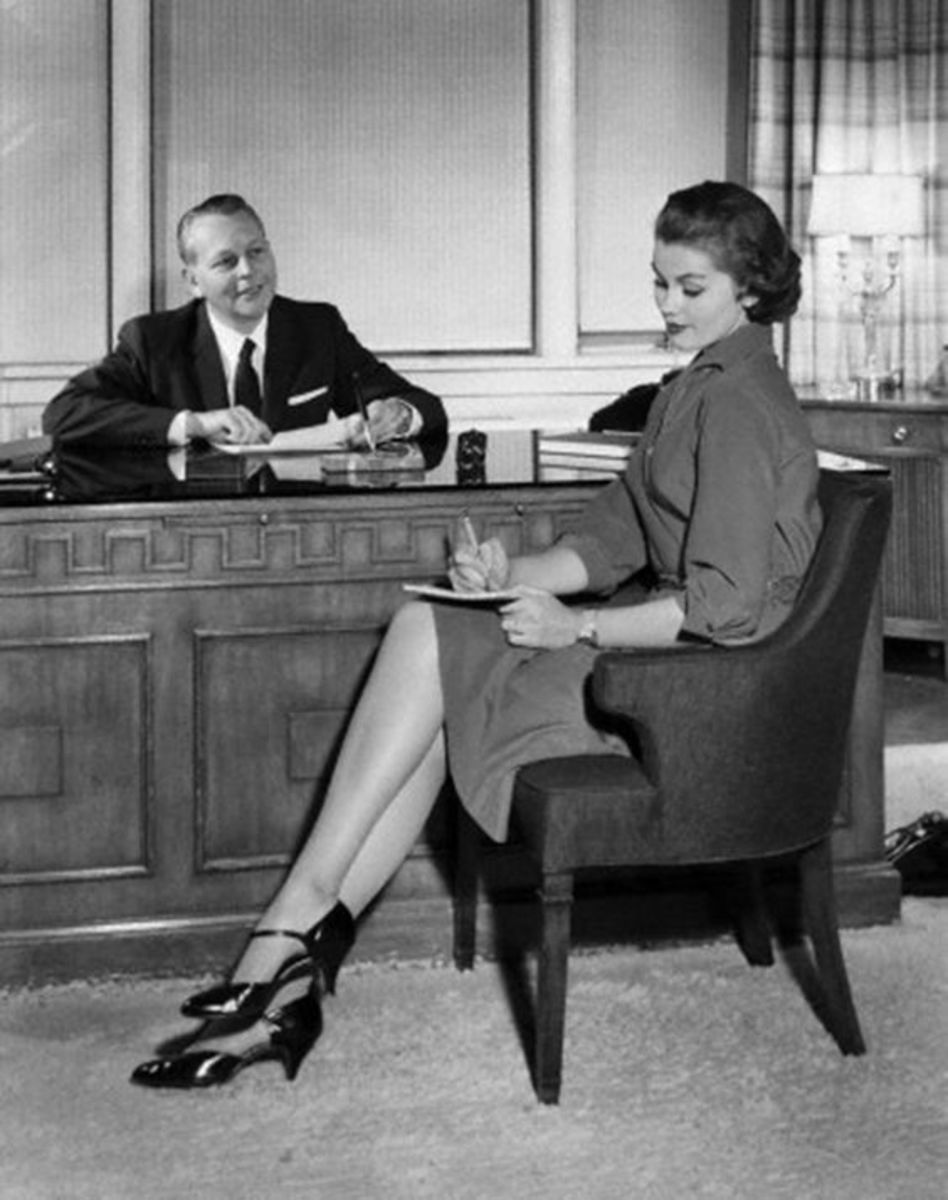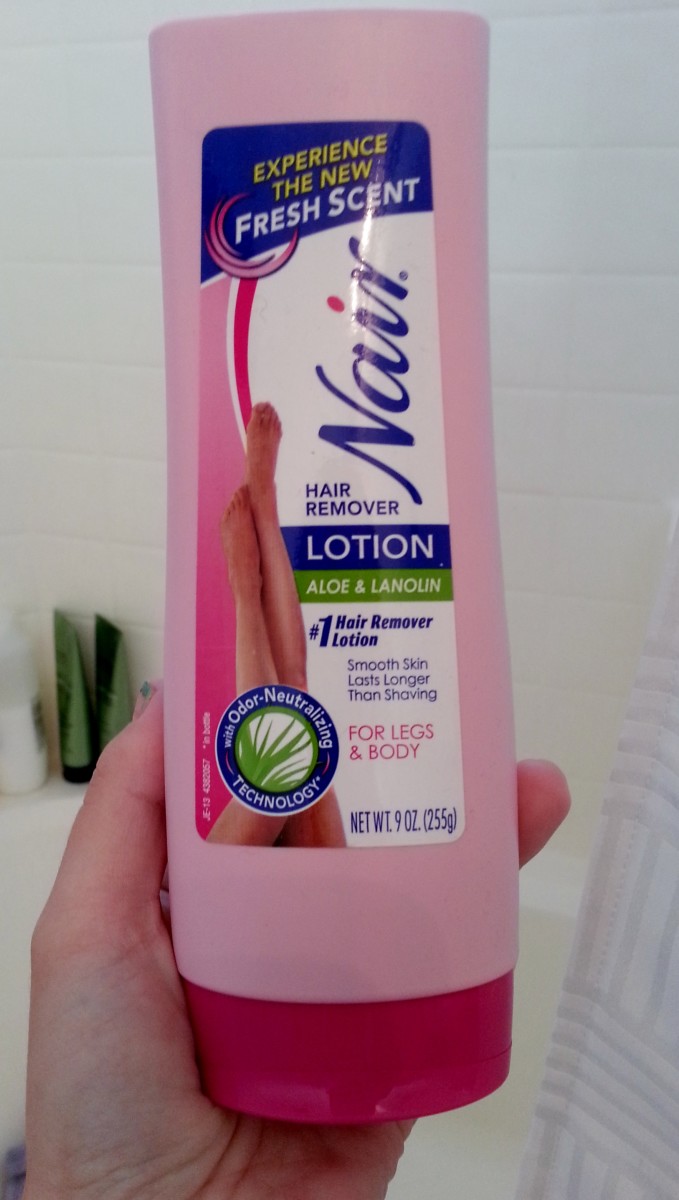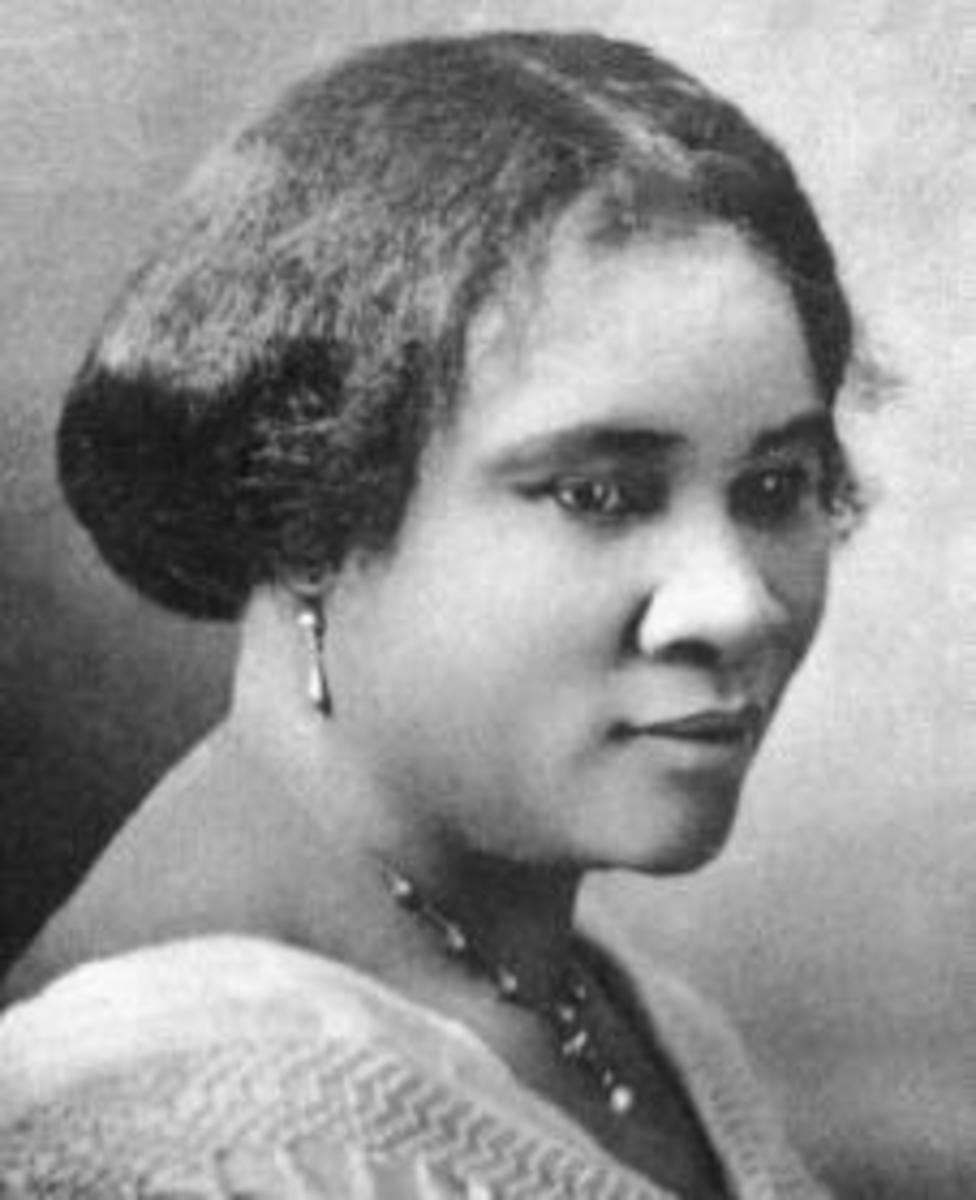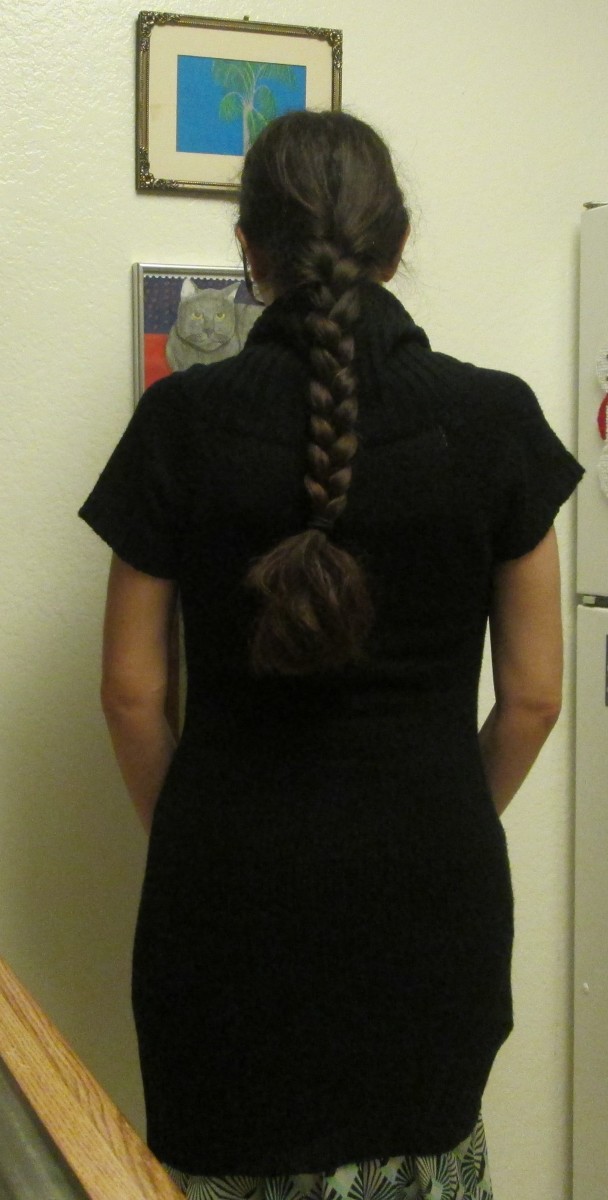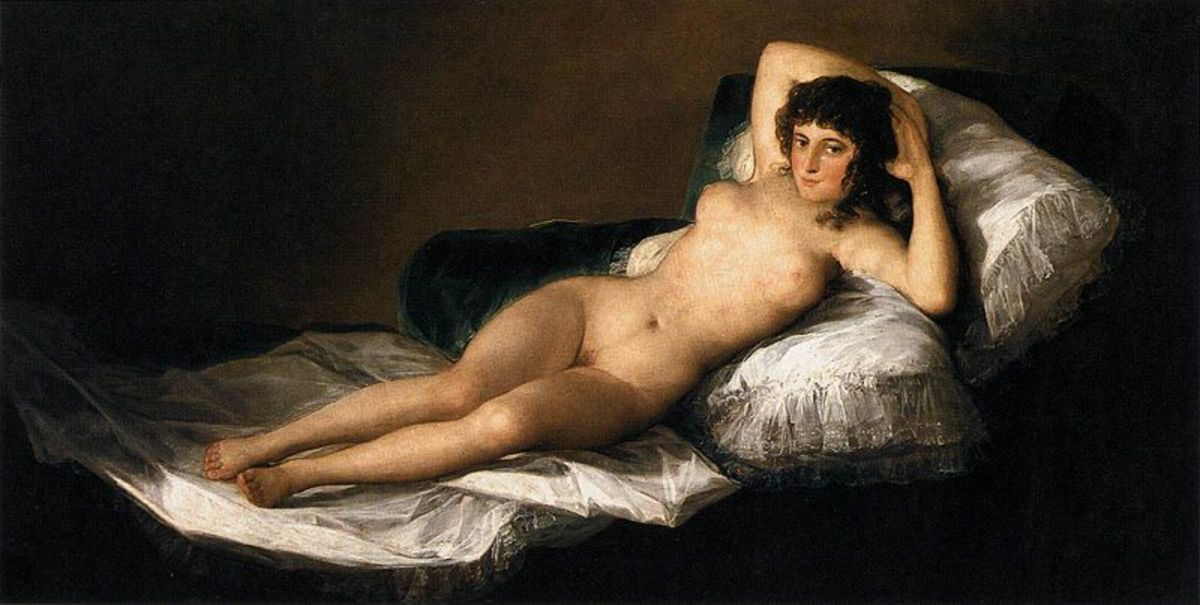Common Female Practices/Products With Odd Origins
There are all sorts of practices and products that we all have no problem correlating with women or thinking of women in a certain way when we hear the practice or product mentioned. But what if you found out that today's view of said practice is total bullshit; or the practice or product that you think has to be virtually new is almost as old as the Egyptian pyramids; or maybe something practical that no one takes into consideration to being special anymore was actually seen as a practice fit only for royalty? No one is going to argue with you if you say that women are complex creatures, but the same could also be said about most of our habits and possessions—it may seem simple on the surface, but dig a little deeper and you're guaranteed to end up scratching your head and wondering, “What the hell?”
1) Vibrators
Sex toys aren't anything new. In fact, sex toys were invented long before your great grandmother was born to deal with so called “hysteria” in women (in the late 19th century). However, it was Cleopatra who wanted a hollow gourd filled with angry bees to use as her vibrator.
If you've boned up on your history where Cleopatra is concerned she had a rather healthy sexual appetite. She wanted multiple male sexual partners at her beck-and-call, so it shouldn't be too surprising that she was sort of the inventress of the vibrator.
Quote
“Cleopatra's angry bees (54BC) ― Little Gold (2004)
The tale says that it was the sexy Cleopatra who had the original idea that resulted in the first vibrator: a hollow gourd full of angry bees.”
Then in the late nineteenth century, electricity entered American homes, and the first electric appliances appeared: the electric fan, toaster, tea kettle, and sewing machine. In 1880, more than a decade before the invention of the electric iron and vacuum cleaner, an enterprising English physician, Dr. Joseph Mortimer Granville, patented the electromechanical vibrator.
http://www.psychologytoday.com/blog/all-about-sex/201303/hysteria-and-the-strange-history-vibrators
2) Brides (It's her special day!)
When exactly did a woman's wedding day become her “special day” that's supposed to be all about her being treated like a princess with her bridesmaids as her lowly minions chosen by her to do her bidding? For a lot of women, their wedding day is just as special as their birthday times one hundred. It's the day she can't wait for her father/daughter dance and for him to walk her down the aisle. It's good that now women see it as a positive instead of the fact that her father used to use her for currency.
Quote
Remember that "Women's Studies" class you considered taking in college? Allow us to summarize what you would have learned: All of our society's gender issues stem from the fact that fathers once used their daughters as currency to a) pay off a debt to a wealthier land owner, b) symbolize a sacrificial, monetary peace offering to an opposing tribe, or c) buy their way into a higher social stratum. So next time you tear up watching a beaming father walk his little girl down the aisle, remember that it's just a tiny, barbaric little holdover from the days when daughters were nothing but dollar signs to daddy dearest. And that veil she's wearing? Yeah, that was so the groom wouldn't know if he was stuck with an uggo until it was time to kiss the bride and too late to back out on the transaction.
http://mentalfloss.com/article/18915/bizarre-origins-8-wedding-traditions
In the old days, the father of the groom and the father of the bride made a deal. If they came to an agreement, the young couple was allowed to marry.
http://www.examiner.com/article/giving-away-the-bride
3) Stilettos
The agony! It doesn't matter the height—two inches, four inches, six inches—or whether they're considered a “practical” part of a woman's work attire (whether she works in an office or sliding down a pole), they've become somewhat of an entity of their own in women's culture. There are some women now that construct entire closets just for their shoe collection. But why do you wear them? A lot of women may say because they look pretty, or professional, or sexy, or maybe a combination of all three. However, the real reason is you only wear them because men wore them first.
Quote
Why do women wear high heels? Because men did.
Men were the first sex to don the shoe. They were adopted by the European aristocracy of the 1600s as a signal of status. The logic was: only someone who didn’t have to work could possibly go around in such impractical footwear.
Women started wearing heels as a way of trying to appropriate masculine power.
http://thesocietypages.org/socimages/2013/02/05/from-manly-to-sexy-the-history-of-the-high-heel/
4) Removing Hair
Hair removal for women wasn't actually a common practice except for women who performed it for certain rituals within their particular culture or religion (more than likely for hygienic reasons), and it didn't catch on as commonplace (and not to mention widely socially acceptable) for women in the United States until the 1920s. Believe it or not, the inspiration for this at the time was sparked by the strippers (aka flappers) of that era.
cut tops, short skirts, and even women wearing pants (long or short) weren't exactly normal during that time. Therefore, hair removal wasn't really an issue. The way people act about women keeping their bodies neatly hairless today you would think that it was practiced for longer than it has. But the truth is, having a hairy legged wife back in the day probably wasn't a huge deal at all.
Quote
The 1920s…encouraged a massive ‘unveiling’ of the female body, which
meant that certain body parts were bared and displayed in ways that they
had never been before. This new freedom to display the body was
accompanied, however, by demanding beauty and dietary regimens that
involved money as well as self-discipline.
http://history.barnard.edu/sites/default/files/inline/kirstenhansenthesis.pdf
Once clothing fashions allowed bare arms and legs in the 1920s, leg and underarm hair removal began.
http://www.sensationizer.com/2009/03/long-history-of-hair-removal.html
But it wasn't until the 20th century that hair removal moved from the virtually exclusive domain of men. During the post-Victorian era, particularly in the United States, women's fashions dictated the removal of hair from both legs and underarms.
For the first time in nearly 2,000 years, women were baring their legs (up to the knee!) and wearing sleeveless flapper dresses. Every American woman of fashion sported clean, hairless legs and underarms.
Smooth, closely-shaven legs took on a new appeal during the early days of World War II in the United States. Nylon hosiery became scarce, causing women to go without stockings and to apply leg makeup instead. These American women appeared to be wearing hose with the help of makeup, complete with a seam up the back of the leg applied with a black marker. Smooth, hairless legs made this illusion much easier to achieve.
Since then, the appeal of clean, smooth, hairless legs and underarms for women has never dimmed. Hair removal has become as much a part of women's beauty routines as conditioning hair or applying lipstick. Hair-removal products and techniques have changed throughout the history of shaving, yet the desired result—soft, smooth, hair-free skin—remains.
http://www.beinggirl.com/article/history-of-shaving/
5) Nail Polish
Today it's no big deal for women (or men) to polish their nails at home or pay to get it done at a local salon. There are all sorts of different techniques that have been developed to make nail art into what it has become—and it is indeed considered an art form by many people. But it was more than an art form centuries ago, it was used to separate classes of people in China. And though it may seem like a rather mundane practice by some, it used to be purposely used as a tool for seduction.
Quote
3000 B.C., China/Egypt
The Chinese used nail color as a distinction of class and dynasty. They combined egg whites, beeswax, Arabic gum and flower petals to create a pigment that they would soak their nails in for hours to reach a desirable effect. The process was reserved for the upper class, and the color worn generally reflected the colors of the ruling dynasty.
http://www.alligator.org/blogs/lifestyle/thefbomb/article_92924820-8e3d-11e1-b5bf-001a4bcf887a.html
6) The Color Pink
Today, the color pink is considered one of the most defining colors of femininity. Think pink onesies, pink dresses, pink ribbons, pink flowers, random pink items floating by in tampon commercials. Sometimes during female product advertisement it looks like Steven Tyler was the set consultant and he just let Princess Bubblegum explode all over the place as decoration.
Strangely enough, however, there wasn’t a concrete color representing every little girl in the world until the 1940s. Before then, kids were mostly dressed in neutral colors because parents worried that dressing them in the wrong thing could possibly turn them into perverts.
It’s sort of ironic that now these two colors--pink and blue--became representations of gender roles when in the beginning it was the reverse. Red was the color associated with power and masculinity and since pink is just a lighter shade of red, it was initially taken for boys. And blue, which is a cool soothing shade (also ethereal), it was thought to be best suited for females. However, apparently even with all the thought going into this choice, one magazine threw up both their middle fingers to the logic presented and went with the basics: pink seemed like more of a soft pretty feminine color they thought would look cute on girls and blue came across as a more “solid” masculine color that would look cute on little boys. And that blind faith of one publication ultimately stuck.
Now? Most grown men have to get coaxed into wearing their “salmon” colored striped ties or shirts by their girlfriends or wives so they can coordinate, and risking getting teased by his friends if he does, and if a woman chooses blue as the décor for her baby daughter’s nursery most people will probably look at a woman in judgment and ask her why she’s being weird. But the reality is, those colors shouldn’t be any determining factor toward either sex since they’re just random colors chosen from the crayon box of life, but a lot of us have just been trained to see it a certain way.
The truth is, in plenty of other countries and cultures aside from those in the west, blue and pink are just blue and pink. Most of them still choose to dress their children in white or other neutral colors, but dressing them in any other colors wouldn’t bring up a big issue either. And if you were to approach them with some deep cockamamie excuse about pink being for girls and blue for boys they’d probably think you’re a jackass. And the longer you speak trying to convince them that you know what you’re talking about as if you have some real concrete evidence to back you up, then yes, you kind of are a jackass. Because there isn’t any real excuse. Except for the fact that maybe the color pink it really is just pretty.
Quote
“It’s really a story of what happened to neutral clothing,” says Paoletti, who has explored the meaning of children’s clothing for 30 years. For centuries, she says, children wore dainty white dresses up to age 6. “What was once a matter of practicality—you dress your baby in white dresses and diapers; white cotton can be bleached—became a matter of ‘Oh my God, if I dress my baby in the wrong thing, they’ll grow up perverted,’ ” Paoletti says.
In 1927, Time magazine printed a chart showing sex-appropriate colors for girls and boys according to leading U.S. stores. In Boston, Filene’s told parents to dress boys in pink. So did Best & Co. in New York City, Halle’s in Cleveland and Marshall Field in Chicago.
Today’s color dictate wasn’t established until the 1940s, as a result of Americans’ preferences as interpreted by manufacturers and retailers. “It could have gone the other way,” Paoletti says.
http://www.smithsonianmag.com/arts-culture/when-did-girls-start-wearing-pink-1370097/

